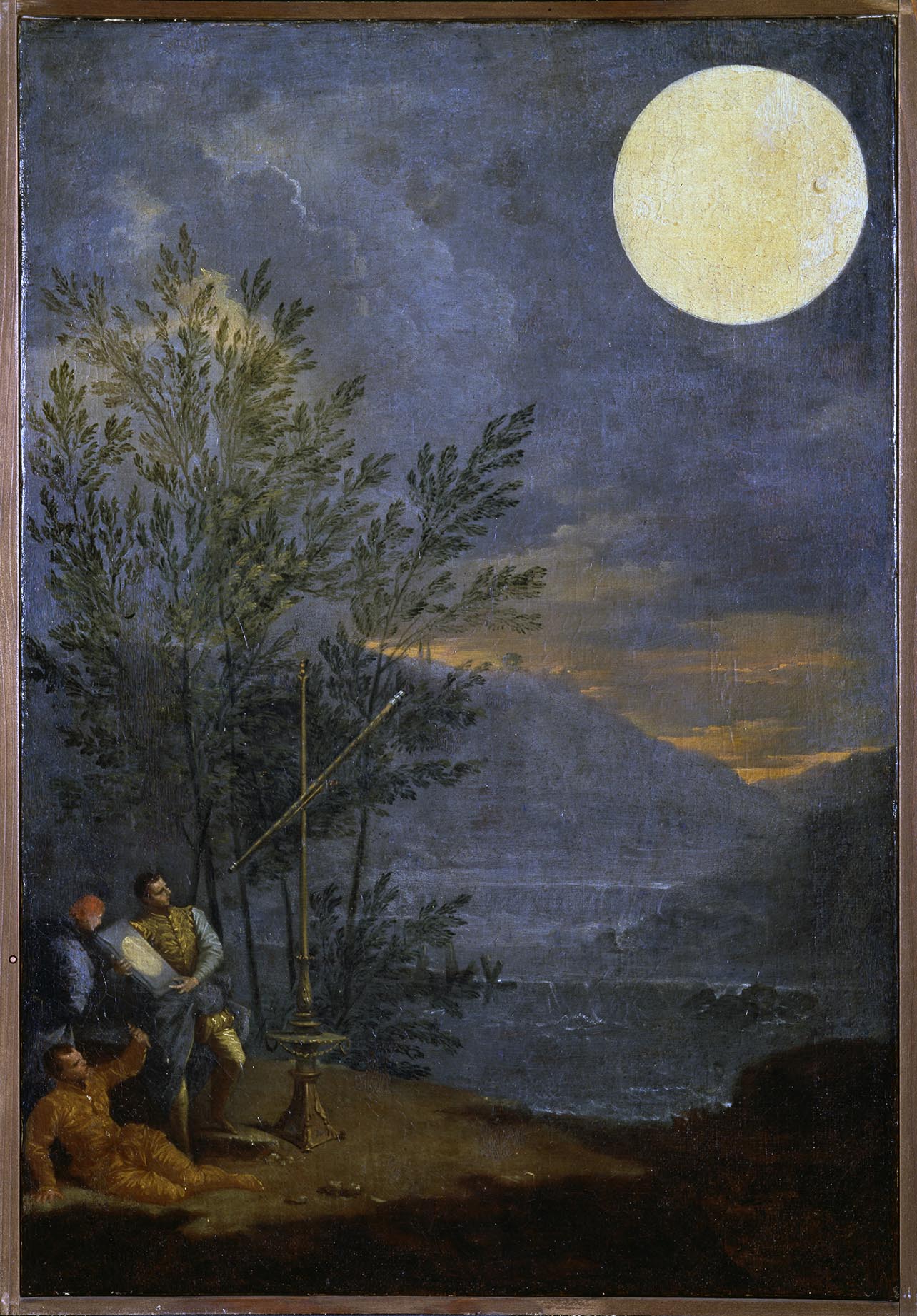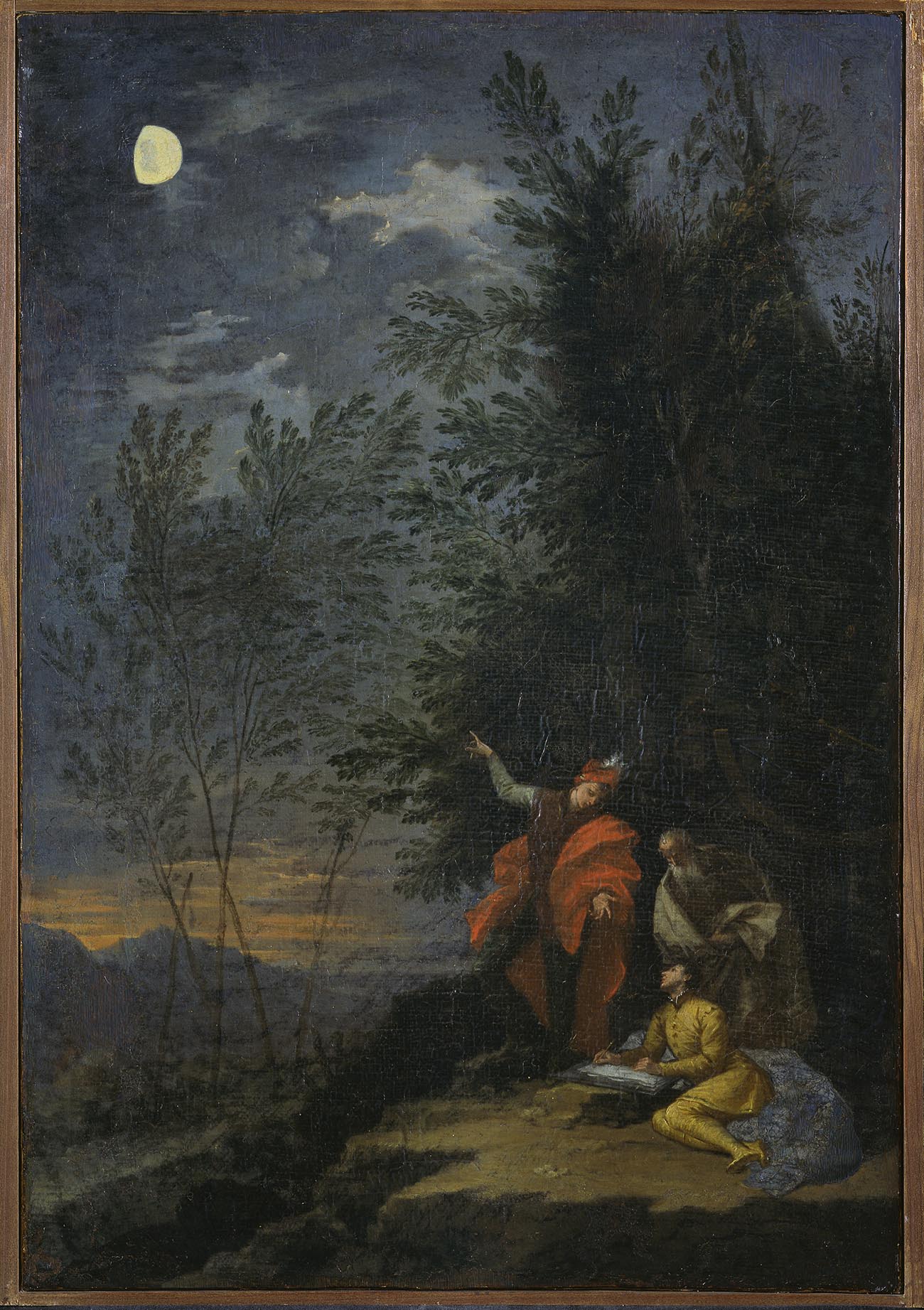
Nocturnes with Astronomical Instruments (1711)
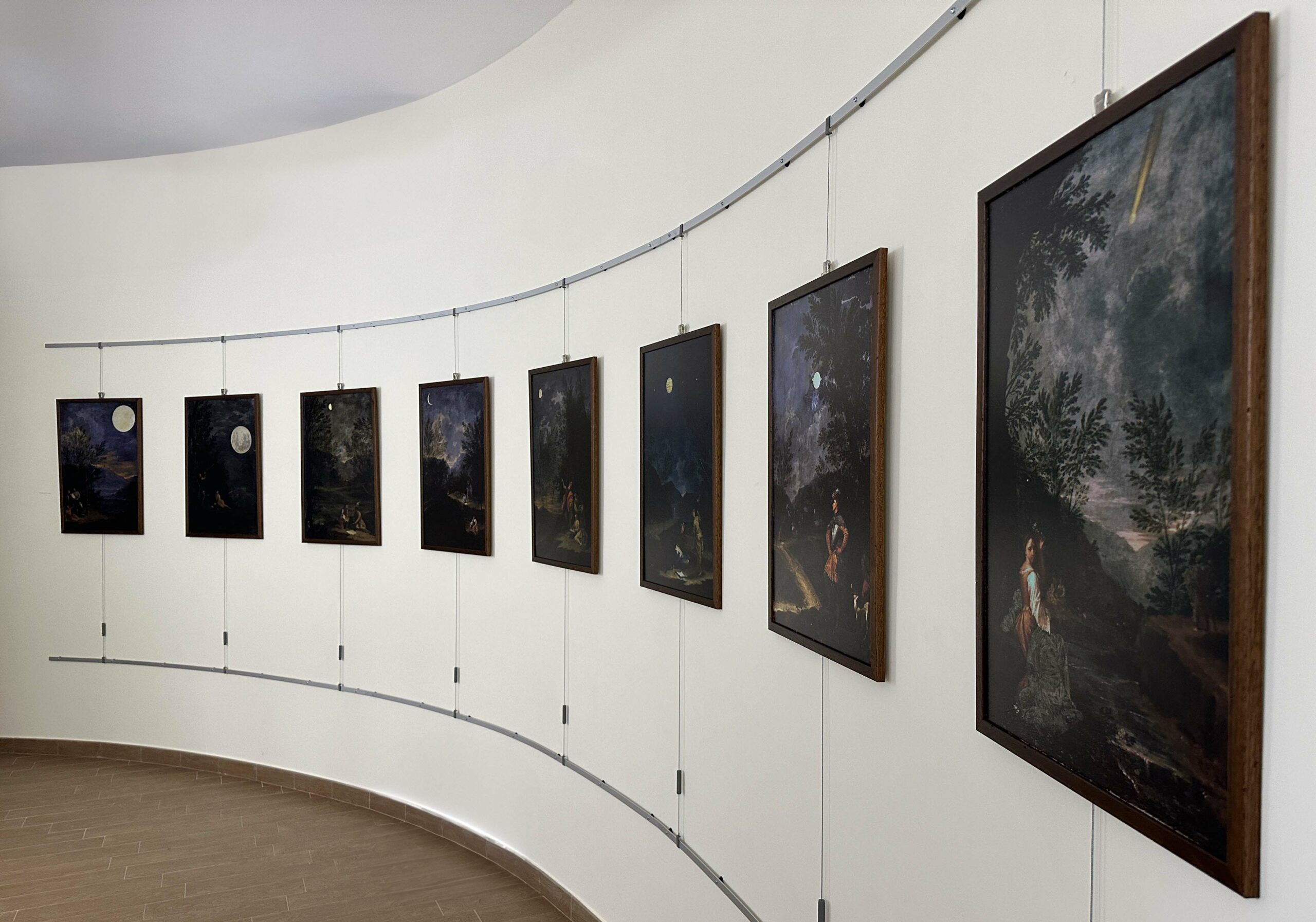
Donato Creti and Raimondo Mansini
Nocturnes with Astronomical Instruments (1711)
Copies of series of small canvases (originals in the Vatican Pinacoteca) depicting celestial bodies above nocturnal landscapes. The paintings were commissioned in 1711 by the Bolognese count Luigi Marsili as a gift to Pope Clement XI, illustrated the instruments he wished to obtain for an astronomical observatory in Bologna; the gift was successful, and the Observatory established there continues to this day, one of the oldest observatories in continuous use in the world.
The eight paintings display the various instruments desired to be purchased, each depicted in an elegant setting as painted by Creti. The planets themselves — Sun, Moon, Mercury, Venus, Mars, Jupiter, Saturn, and a comet — were inserted into the painting by the noted miniaturist Raimondo Mansini. In the summer of 1711 he observed the planets in the telescope of Eustachio Manfredi, a self-taught astronomer who had encouraged Marsili to pursue the construction of the observatory.
Note that the images almost all exhibit excellent scientific accuracy: the Sun includes sunspots; the Moon is depicted with south up, as seen in a telescope; Mercury is half phase, as it is seen when furthest from the Sun (and thus best visible in a telescope); the points of the crescent of Venus extend beyond the half-disk point, a result (we now know) of the refraction of light by that planet’s dense atmosphere; Mars is “gibbous” as can be seen during parts of its orbit; Jupiter includes the Great Red Spot, the first color depiction (the spot was first reported in 1665), and three of its four large moons. Saturn, however, is the one exception; it is not a good depiction of the rings, and in fact, Saturn was not visible in the sky during the summer of 1711 when these images were made.
Sun
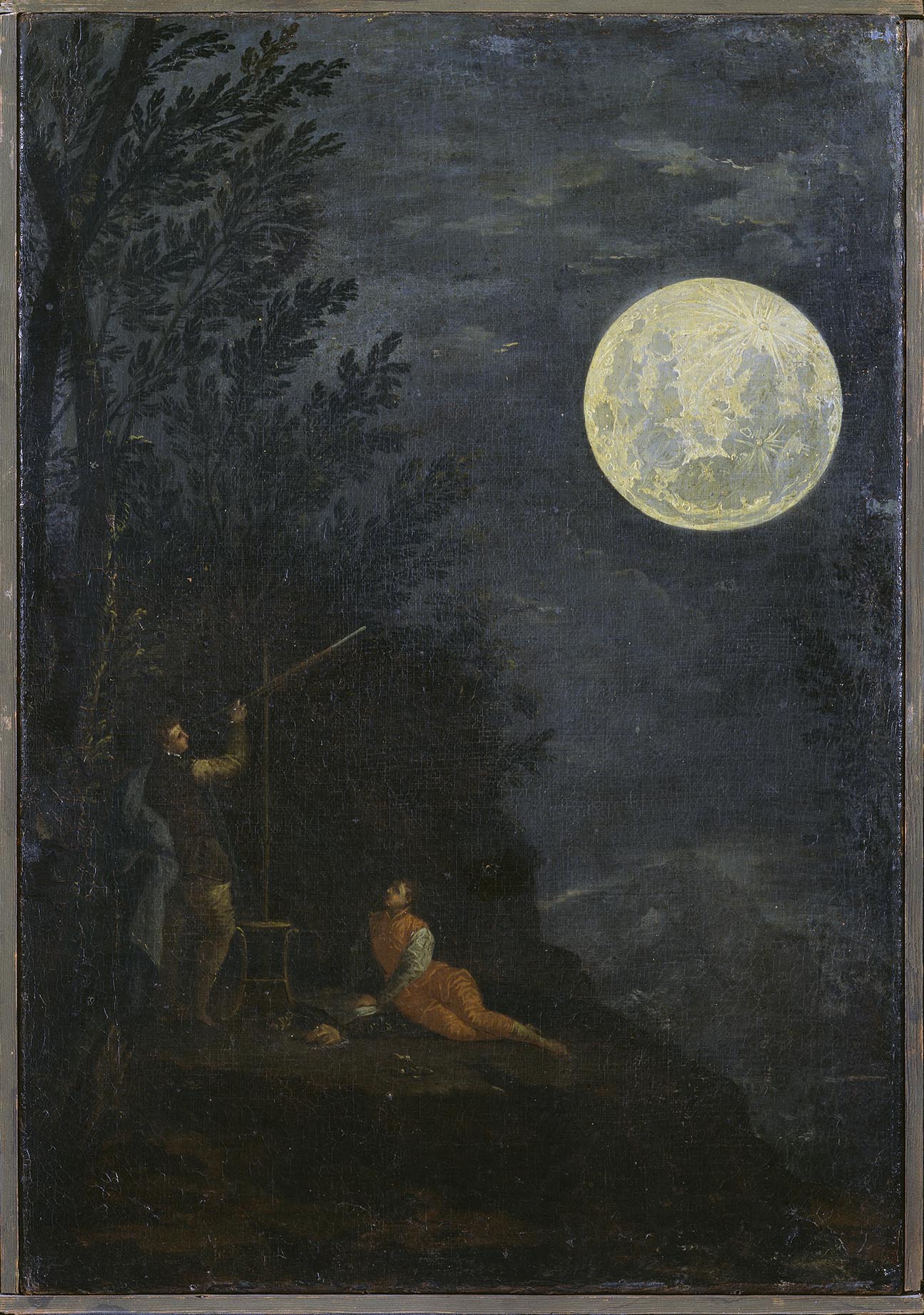
Moon
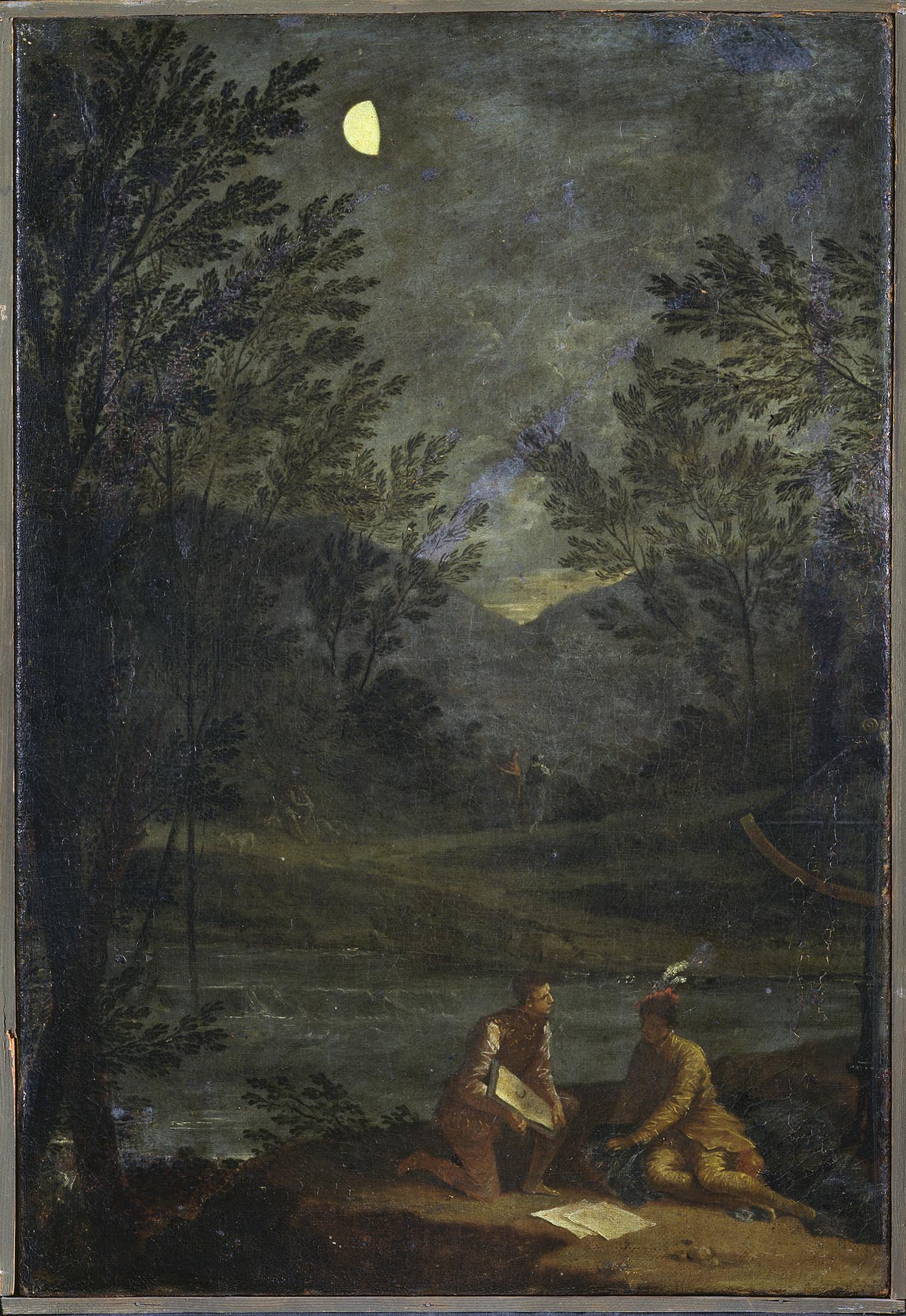
Mercury
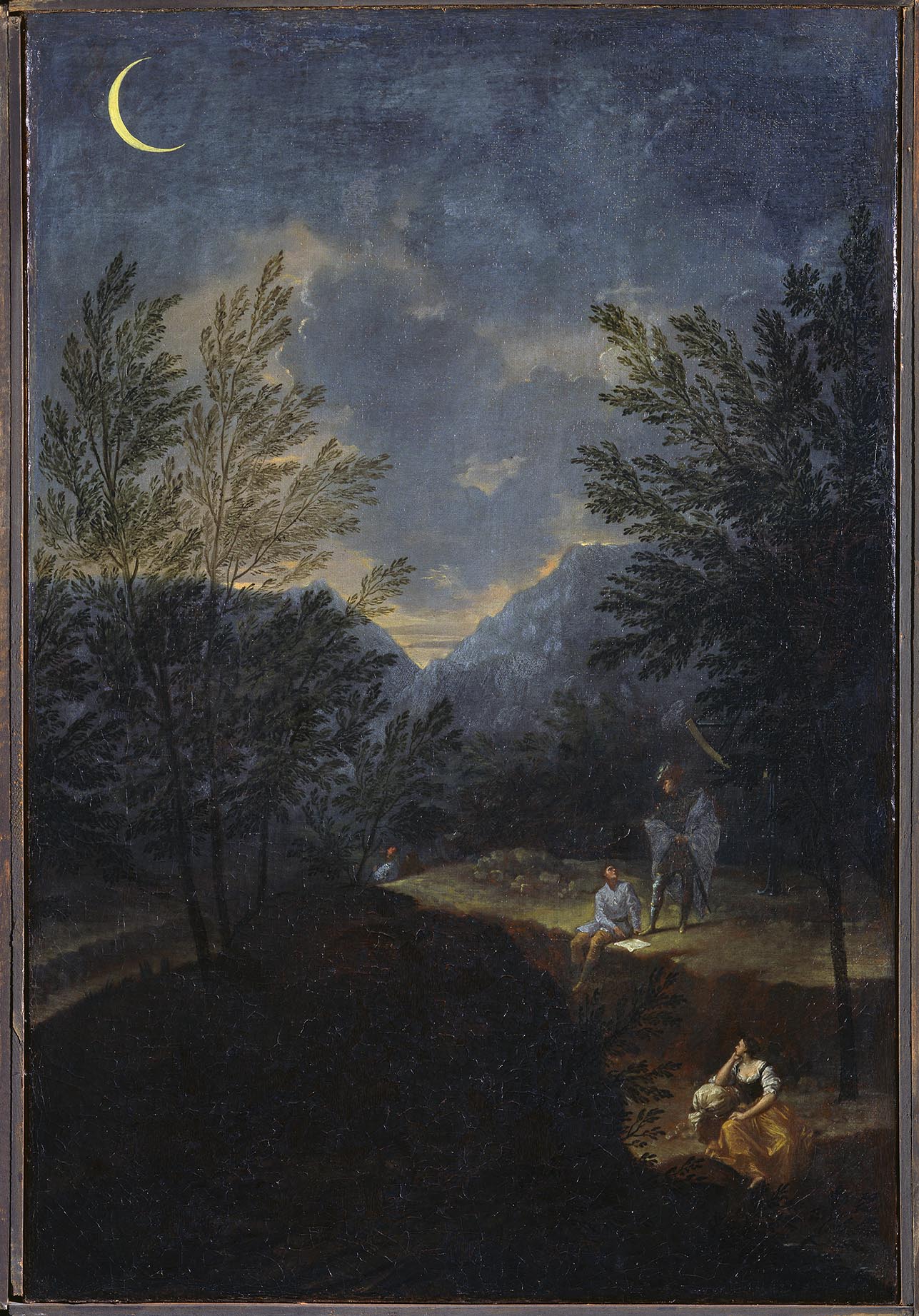
Venus
Mars
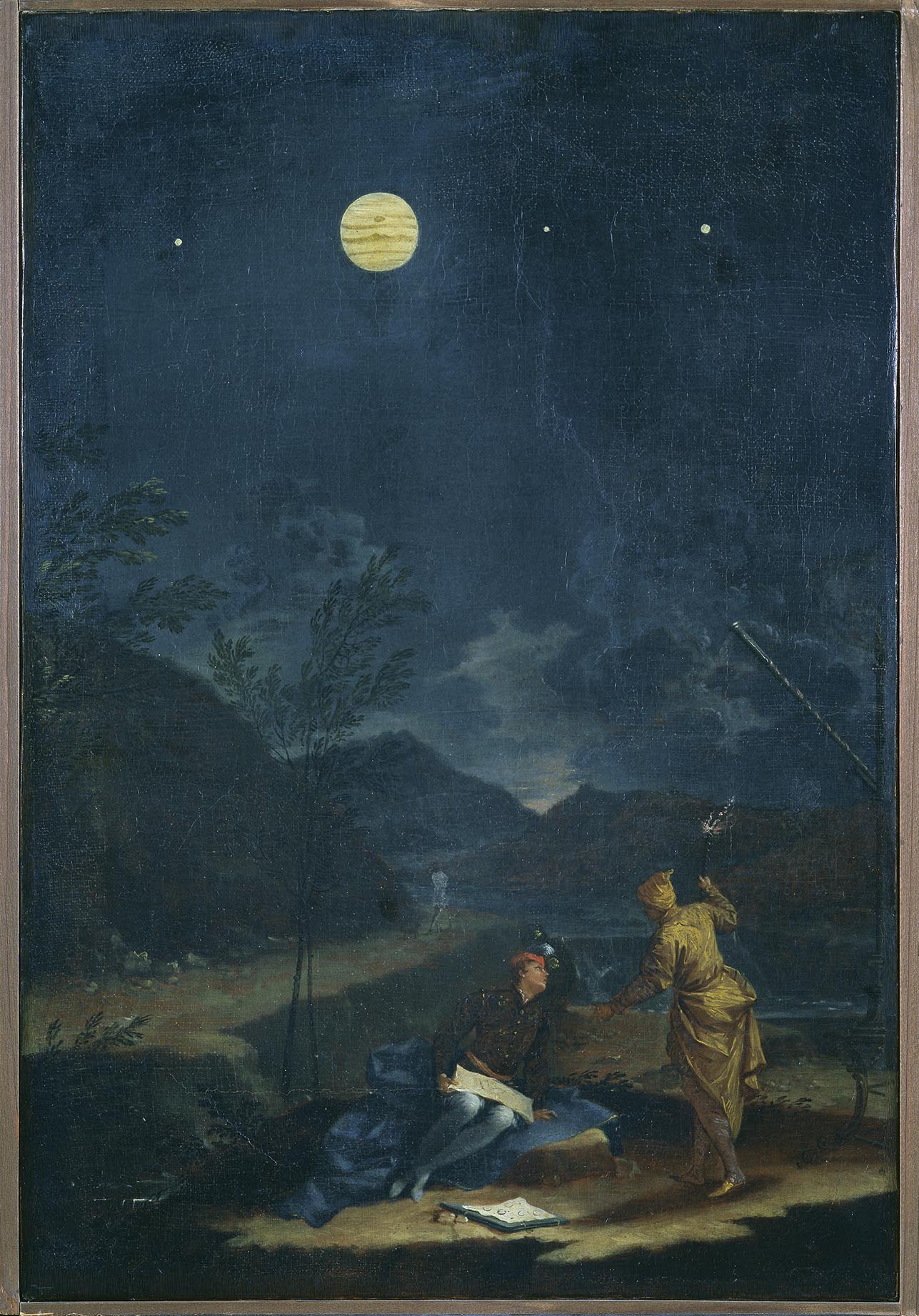
Jupiter
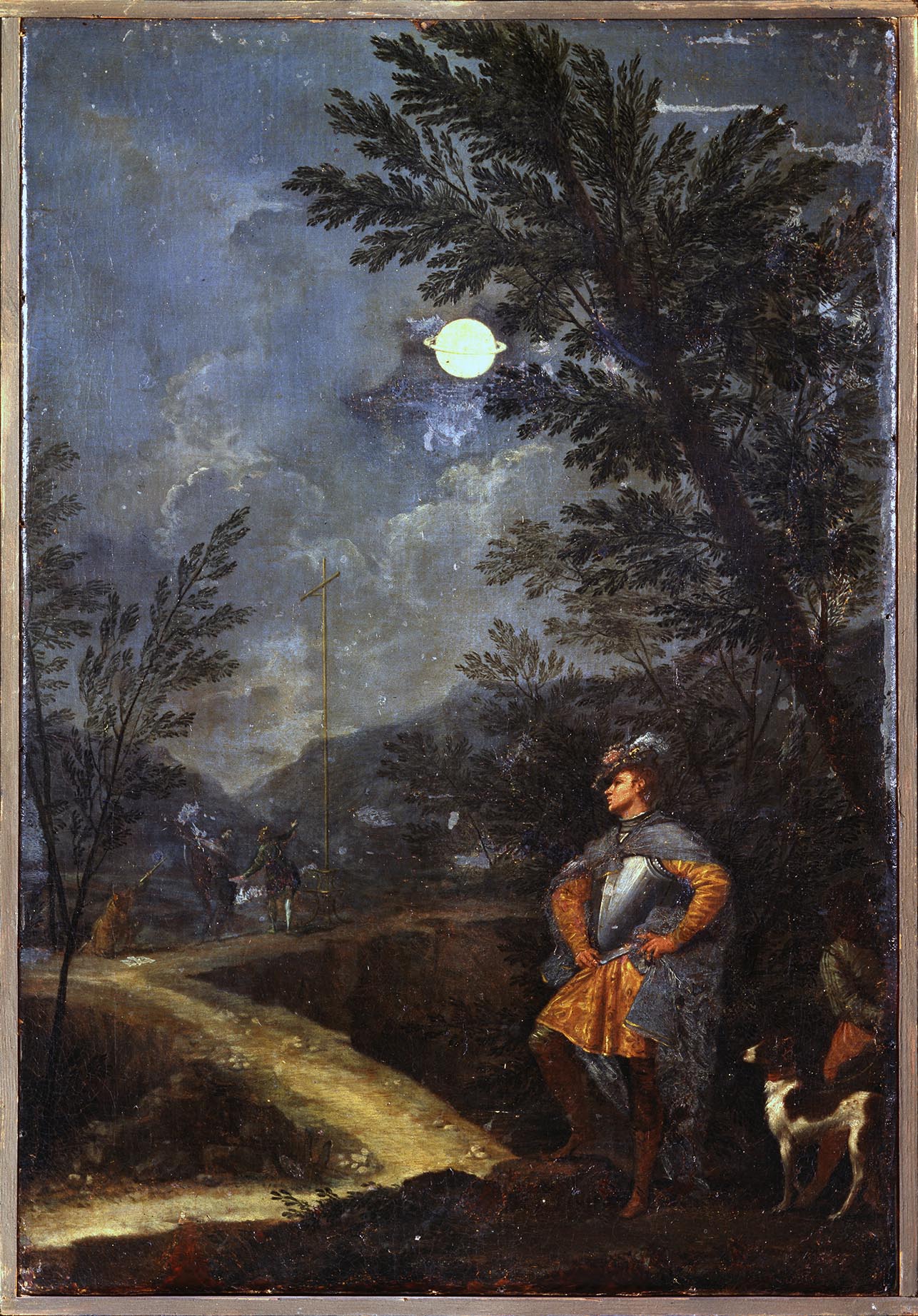
Saturn


